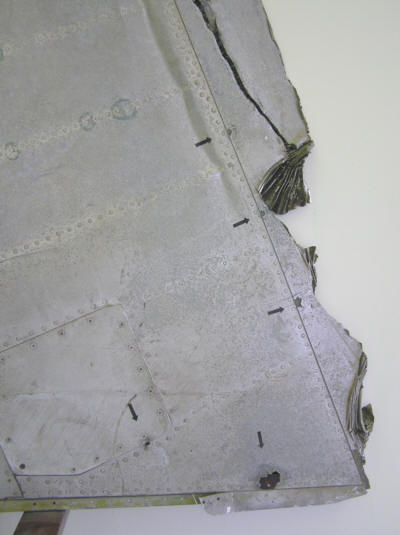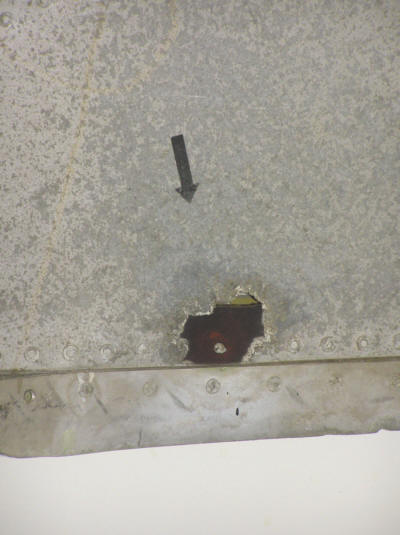Atmospheric Science hall
displays at the University at Albany
Lightning hazards - Aircraft safety -
Boeing 707 wingtip with lightning strike damage
Faculty interested in the physics of thunderstorm electrification,
lightning generation and discharge, and related phenomena have formed
part of the Atmospheric Sciences department since its inception. This
group have also been
involved in studies of the reduction of lighning strike hazards, and
were the first to develop an automated regional lightning strike
mapping system, which subsequently was enlarged and integrated into the
national lightning detection system.
At the west end of the Earth Science building at the University at
Albany, the wingtip of a Boeing 707 is mounted on the wall. This was
part of a Pan American aircraft that was struck by lightning at about
5000ft. altitude while in a holding pattern for landing at Philadelphia
on 8th December 1963. This event
caused the fuel vapor in the wing fuel tank to ignite, and the aircraft
broke up and crashed. The wingtip on
display shows several patches where the aluminum sheet of the wing
surface
was vaporized by the intense local heating caused by the lightning
discharge. As a result of the
investigation of this incident, aircraft design was improved (among
other things by more thorough electrical bonding of metal parts) to
reduce the hazard of
in-flight lightning strikes. The late Professor
Bernard Vonnegut, who
was a member of the Department of Atmospheric Sciences, was an expert
on lightning and helped in the investigation of the crash.
There are still good reasons based on knowledge of atmospheric science,
besides the hazard of lightning, for aircraft to stay away from
thunderstorms, especially when flying at low speeds and low altitude,
such as on approach to landing, because localised
strong downdrafts and abrupt changes in wind direction (so-called
microbursts, and wind shear) commonly occur in association with
thunderstorms.

The port wingtip of the Pan Am Boeing 707 showing vaporized patches of
the
wingskin aluminum (small black arrows 3cm long point toward these)
caused by a
large lightning strike while the aircraft was in flight near a
thunderstorm. More detailed views of the right-hand lower part are
shown below.


Origin and
history of the Atmospheric Sciences at Albany
pages on
Bernard Vonnegut
Department of Atmospheric and Environmental Sciences


